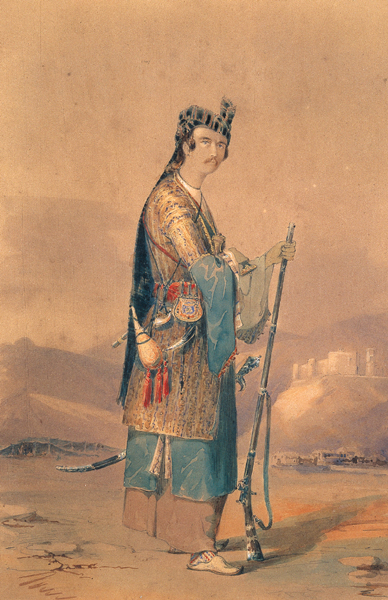Image Details

British Museum
The man behind the monuments. Dressed in the traditional garb of Iran’s fierce Bakhtiari tribe, with whom he lived for a year, Austen Henry Layard was posted at the British Embassy in Istanbul when artist Amedeo Preziosi, a Maltese nobleman, completed this watercolor portrait in April 1843.
Born in Paris (to British parents) in 1817, and raised in Switzerland and Italy, Layard studied law before he set out as a young man in 1839 to work in Ceylon. Distracted by the antiquities he saw as he traveled through the Near East, Layard never reached India. Instead, he became a British diplomatic agent in Istanbul. At the embassy in 1842, Layard briefed the British ambassador Stratford Canning on border conditions between Persia and Turkey; the ambassador was so impressed with the young adventurer that he agreed to sponsor Layard’s first excavations at ancient Nimrud (biblical Calah) in 1845; the British government would later provide financial support. In 1849, with the museum’s assistance, Layard also excavated Nineveh. By 1850, at age 33, his career as an excavator had ended. He died in 1894.
